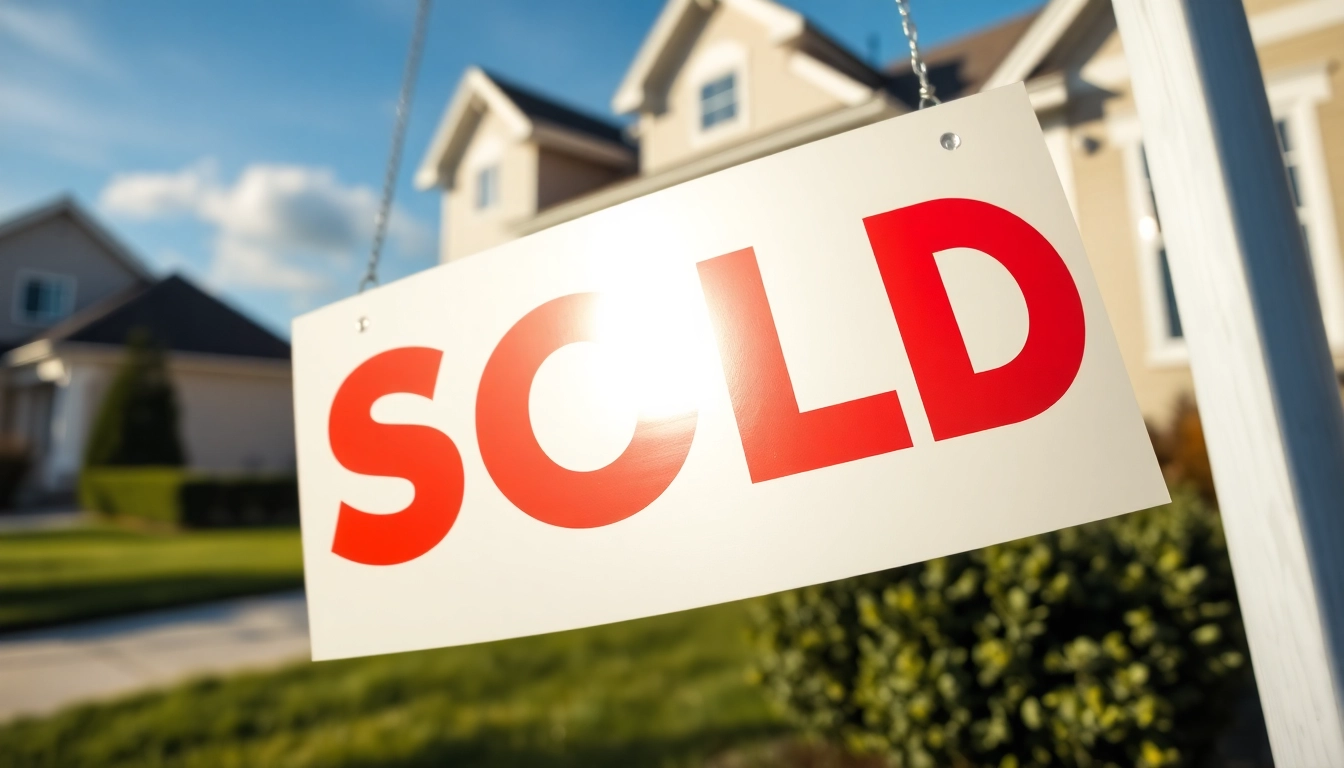Maximizing Real Estate Success with Effective Sold Signs
In the competitive world of real estate, visual marketing plays a crucial role in attracting buyers, building brand recognition, and closing deals efficiently. Among various tools, the humble sold sign remains one of the most cost-effective and versatile assets in a realtor’s marketing arsenal. This comprehensive guide explores the strategic use of sold signs, from design principles to emerging trends, to help real estate professionals elevate their branding and increase sales productivity.
Understanding the Role of Sold Signs in Real Estate Marketing
Sold signs are not merely markers indicating a property has been purchased—they are powerful branding tools that communicate success, credibility, and professionalism. When strategically utilized, they serve multiple purposes: attracting potential clients, showcasing a successful track record, and creating a sense of urgency among prospective buyers.
Why a Well-Designed Sold Sign Matters for Property Sales
A well-crafted sold sign does more than convey the status of a property; it enhances visibility, attracts attention, and boosts your brand image. The visual impact of a professionally designed sign can influence how potential clients perceive your agency’s reliability and expertise. For example, high-quality signs with clear branding and eye-catching graphics tend to generate more inquiries and referrals, contributing directly to increased sales and faster property turnover.
Research indicates that over 60% of homeowners select an agent based on their branding and marketing materials, including signage. Moreover, an effective sign acts as a silent salesperson, working tirelessly around the clock to promote your services even when you’re not actively engaging with clients.
Legal Considerations and Placement Best Practices
Deploying sold signs also involves understanding local regulations and best practices to avoid legal complications and maximize impact. Many municipalities have specific rules regarding signage size, placement, and illumination. It is vital to research your area’s ordinances and obtain necessary permits before installing signs.
Placement is equally critical. Signs should be positioned in high-traffic areas, visible from multiple angles, and free from obstructions such as parked vehicles or landscaping. Placing signs at strategic points—near entrances, along main roads, and in neighborhood hubs—ensures maximum exposure. Additionally, timing the installation—such as immediately after a sale closes—can capitalize on the buyer’s satisfaction and the credibility boost for your agency.
Different Types of Sold Signs: Styles, Materials, and Customization Options
Sold signs come in a plethora of styles and materials, allowing Realtors to tailor their messaging and aesthetic to match branding strategies. Common materials include corrugated plastic, metal, wood, and vinyl, each offering unique durability and visual appeal. For temporary use, lightweight materials like corrugated plastic are popular due to affordability and weather resistance.
Design customization enhances recognition; signage can feature your agency’s logo, contact information, and even dynamic elements like QR codes or digital displays. For example, adding bright colors such as red or yellow increases visibility. Additionally, incorporating graphic elements—like house icons or arrows—guides viewers’ attention effectively. Highly personalized signs, such as those crafted with UV-printed images and customized messages, leave an enduring impression and reinforce your brand identity.
Designing an Impactful Sold Sign for Your Listings
Key Elements of Effective Sold Sign Design: Colors, Fonts, and Branding
Design plays a vital role in ensuring sold signs are both attractive and informative. Color schemes should be bold and contrasting for maximum visibility. For instance, combining black text on a yellow or red background ensures readability from a distance. Fonts should be simple, bold, and easy to read at a glance—avoid ornate styles that can confuse or slow down viewers.
Branding is central to design efficiency. Incorporate your logo and consistent color themes across all signage to reinforce your brand identity. The inclusion of your agency’s motto or tagline can also elevate perceived professionalism.
Using Graphics and Images to Enhance Visibility and Appeal
Graphics are instrumental in capturing attention quickly. House icons, directional arrows, or “sold” stamp overlays add clarity and visual interest. Using high-resolution images or professional vector illustrations ensures that signs appear sharp and polished. Consider incorporating a QR code that directs viewers to your listing page or contact information, bridging the gap between physical signage and digital engagement.
Incorporating Personal or Agency Branding for a Professional Look
Custom signs that showcase your unique branding differentiate you from competitors. Personalized signs featuring your agency’s logo, slogan, and contact details create a cohesive marketing message. For instance, a sign with your branded color palette and a professional font communicates reliability and establishes recognition in the community. Handcrafted or UV-printed signs customized with your branding can foster trust and leave a memorable impression on potential clients.
Maximizing Visibility and Engagement with Sold Signs
Strategic Placement and Timing for Maximum Exposure
Strategic placement is essential. Position signs at key vantage points, such as entrance drives, neighborhood intersections, and along main roads. Ensure visibility from different angles and avoid obstructive greenery, parked cars, or other signs that could diminish impact. Proper timing—installing the sold sign promptly after closing—capitalizes on the buyer’s enthusiasm and showcases your recent success.
Further, consider installing multiple signs over the course of a sale: directional arrows leading to open houses or additional yard signs to reinforce branding across neighborhoods. Repeating signage in strategic locations increases brand recall and keeps your agency top of mind among local homeowners.
Leveraging Digital and Social Media Alongside Physical Signs
Complement traditional signage with digital marketing efforts. Share photos of your sold signs on social media platforms, highlighting recent sales to build your online reputation. Use geo-targeted advertising to reach local audiences and showcase your success stories. Sharing behind-the-scenes content, such as designing custom signs or installing them, humanizes your brand and attracts engagement.
Furthermore, incorporating digital signage options—such as smart signs with real-time updates, QR codes, or LED displays—can attract tech-savvy buyers and provide immediate contact avenues. Embedding digital elements enhances the professionalism of your signage and keeps your marketing modern and innovative.
Measuring the Impact of Sold Signs on Listing Inquiries and Brand Recognition
Assessing the effectiveness of your sold signs involves tracking inquiries, listing conversions, and brand visibility. Use customized phone numbers or URLs on signs to measure direct responses. Monitor online mentions, share counts, and engagement metrics related to your signage campaigns.
Regular analysis of these data points enables you to refine your sign placement, design elements, and overall branding strategy for continuous improvement. When combined with other marketing techniques, sold signs can significantly boost your listing volume and reinforce your reputation as a successful realtor.
Innovative Trends in Sold Signage for Realtors
Smart and Digital Signs for Real-Time Updates
Technology integration is transforming signage. Smart signs equipped with wireless connectivity can display real-time updates such as “Sold,” “Under Contract,” or “Open House.” These digital signs allow for quick updates without the need for physical replacements, saving time and money. They can also incorporate animated graphics or videos to attract more attention.
Some advanced systems enable remote management via mobile apps, making them ideal for busy realtors seeking efficiency and flexibility. As these options become more affordable, digital signage is increasingly becoming a standard in advanced real estate marketing strategies.
Eco-Friendly Materials and Sustainable Design Options
Sustainability is an important consideration. Eco-friendly signs made from recyclable plastics, biodegradable materials, or sustainable wood appeal to environmentally conscious clients and align with corporate social responsibility. Solar-powered LED signs are another innovative trend, reducing energy consumption and promoting green practices.
Using sustainable materials not only demonstrates your commitment to the environment but can also differentiate your brand in a crowded marketplace, attracting clients who prioritize eco-friendly businesses.
Personalized Signs That Tell a Compelling Story
Personalization adds a storytelling dimension to signage. For example, signs that include specific property features, success stories, or client testimonials enhance emotional engagement. Handcrafted or professionally UV-printed signs that feature high-quality images and custom messages can narrate your brand’s journey, success rate, or personalized service focus, making your signage a conversation starter and trust builder.
Best Practices for Creating and Using Sold Signs Effectively
Step-by-Step Guide to Designing Your Custom Sold Sign
- Identify Your Objectives: Determine whether the sign’s primary purpose is branding, visibility, or a combination.
- Select Your Materials: Choose durable, weather-resistant materials fitting your budget and style.
- Design the Layout: Use bold colors, clear fonts, and compelling graphics, ensuring your branding is prominent.
- Incorporate Digital Elements: Add QR codes or dynamic digital features if applicable.
- Review Local Regulations: Verify size, placement restrictions, and permit requirements.
- Produce and Install: Work with reputable sign manufacturers and plan installation timing and locations carefully.
- Evaluate & Adjust: Collect feedback, track responses, and refine future designs based on performance.
Tips for Compliance and Seller Communication
Ensure that your signage complies with all local and state regulations to avoid fines or delays. Keep communication transparent with your sellers about the timing and purpose of signs—highlighting that signs can boost marketing efforts and attract future clients. Proper signage also includes clear contact information and branding to maximize opportunity for buyer engagement.
Case Studies of Successful Sold Sign Campaigns and Insights
An illustrative example involves a mid-sized brokerage that redesigned their sold signs with bright brand colors and modern graphics. They strategically placed the signs at key intersections with QR codes linking to property details. Over six months, they observed a 25% increase in listing inquiries and a 15% shorter average time on market.
Another case involved a personal real estate agent who personalized signs with client testimonials and high-quality images of properties. This approach led to stronger brand recognition, increased client trust, and more repeat business.



